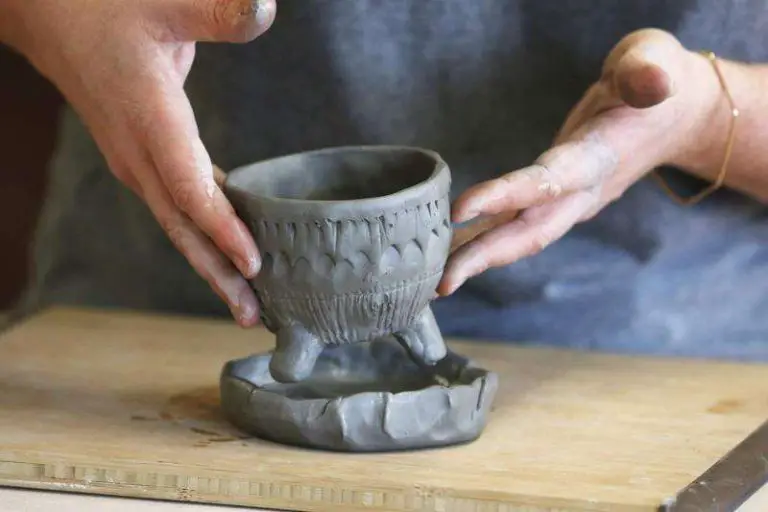Why Does Salt Go On The Right?
Salt has played a critical role throughout human history. As far back as 6050 B.C., there is evidence that ancient civilizations were extracting salt from saltwater sources such as the sea to preserve and flavor food. In fact, salt was so highly valued that it was even used as a form of currency in some ancient societies. The ancient Greeks referred to salt as “divine” and Plato described it as “a substance dear to the gods.”
History of Salt
Salt has played a vital role in human civilization for thousands of years, largely due to its unique ability to preserve food. Before the invention of refrigeration in the 19th century, salting was the primary way to prevent meat and fish from spoiling quickly. This allowed people to store food for much longer periods, which facilitated large population growth and urbanization. Archaeological evidence shows that salt was produced and traded as early as 6,000 years ago in China, Egypt and elsewhere. The earliest recorded salt production dates back to around 5,000 BC in Romania [1]. Roman soldiers were even paid in salt, which is where we get the phrase “worth his salt” from. In medieval times, salt was so valuable that it was referred to as “white gold.” The development of food preservation techniques like salting, smoking, canning and pickling allowed civilizations to grow and thrive.
Salt’s Magical Properties
Salt has long been associated with having mystical powers and protective qualities. In ancient times, salt was considered very valuable and was even used as a form of currency. According to some sources, the word “salary” comes from the Latin word “salarium” which was the money paid to Roman soldiers to buy salt.
Many ancient cultures believed that salt had the power to drive away evil spirits and demons. There was a tradition in ancient Greece where newborn babies were rubbed with salt to protect them from evil. In some parts of Europe, salt was carried in pouches to guard against bad luck and witchcraft. Spilling salt was thought to allow the Devil entrance to the home.
In his book Salt: A World History, Mark Kurlansky notes that salt was linked to magic and protection in many religions including Shinto, Hinduism and Islam. https://www.penguinrandomhouse.com/books/159761/salt-by-mark-kurlansky/
Overall, for thousands of years salt has been revered for its cleansing, healing and supernatural powers across many ancient cultures and belief systems.
Salt and Bad Luck
There are many myths and superstitions about spilling salt being bad luck that date back centuries. According to Salt Superstition – Spilling – Passing – Protecting – Mythology, spilling salt has long been considered very unlucky. It’s believed that spilling salt predicts something terrible will soon happen to someone nearby. Some think the bad luck comes from the devil, who supposedly spilled salt at the Last Supper.
The most common myth about spilling salt is that it brings bad luck for the next 13 years of your life if you don’t throw a pinch of it over your left shoulder immediately after spilling it. This superstition originated in the Middle Ages and was likely started by salt sellers to sell more salt. The number 13 represents the 13 people present at the Last Supper when Judas spilled the salt.
Other myths claim you must toss salt over your right shoulder, or eat a pinch of spilled salt to avoid misfortune. There are various elaborate rituals after spilling it too, like circling your chair three times and counting to ten before sitting again. Regardless of the specific myth, it’s clear spilling salt has long been seen as inviting bad luck.
Right-Hand Preference
Humans have shown a tendency to favor their right hand for at least the last 500,000 years (Wikipedia, 2023). Approximately 90% of people worldwide are right-handed, meaning they prefer using their right hand for tasks like writing, throwing, and using tools (ScienceDirect, 2023). Researchers believe this right-hand dominance arose from the need for cooperation and specialization between the two sides of the brain.
The left side of the brain controls the right side of the body and is responsible for tasks relating to logic, language, and analysis. The right brain controls the left side of the body and handles spatial perception, facial recognition, and processing music and emotions. Having one side of the brain specialized for tool use and fine motor skills may have offered an evolutionary advantage.
Interestingly, some researchers propose that the prevalence of right-handedness gave right-handers an advantage in primitive fighting, resulting in higher rates of survival (Zverev, 2004). The percentage of left-handers fell as right-handers dominated. Today, the causes of left-handedness remain unclear, though genetics, environment, and chance all seem to play a role.
Placing Salt on the Right
There are a few theories behind the tradition of placing the salt shaker on the right side of the table. One popular notion dates back to Leonardo da Vinci’s painting of The Last Supper, which depicts a tipped over salt cellar in front of Judas Iscariot. This fueled a superstition that spilling salt brings bad luck or betrayal. As most people are right-handed, placing the salt shaker to the right helps avoid accidentally knocking it over with the dominant hand.
Additionally, salt was a valuable commodity for centuries, used as currency and for preserving food before refrigeration. Spilling this precious seasoning was seen as wasteful and financially careless. Putting it on the right provided a practical solution. According to https://www.strangereviewers.com/why-does-salt-go-on-the-right/, placing salt within easy reach for right-handed diners simply became habit and etiquette.

While the superstitions around spilled salt may have faded, the tradition continues today more for convenience than avoiding bad omens. Right-handed people can more easily reach and grasp the shaker on their dominant side without bumping anything over. Of course, for lefties, the opposite is true!
Leonardo da Vinci’s Salieri
One of the most famous depictions of salt being placed on the right side of the table comes from Leonardo da Vinci’s painting The Last Supper, completed around 1495–1498. In the painting, da Vinci depicts the final meal Jesus shared with his apostles before his crucifixion. On the table in front of Jesus, da Vinci painted a salt cellar placed to Jesus’ right side.
Art historians believe da Vinci deliberately placed the salt on the right to imply bad luck or betrayal, foreshadowing the betrayal of Jesus by Judas Iscariot. The painting captures the moment when Jesus announces one of his apostles will betray him, and all twelve apostles react in shock and dismay. Judas is depicted reaching for the salt cellar, symbolizing his betrayal.
References:
(1) https://arthive.com/publications/4648~Love_story_in_paintings_leonardo_da_vinci_and_salai
Salt in Religion
Salt has long held an important place in religion and culture. Greek worshippers consecrated salt in their rituals, and Jewish Temple offerings included salt. In fact, the Hebrew word for salt is “melach” which means “to sacrifice.” History of Salt, The story behind saltArticles, Salt rituals in Japan | JAPANESE MYTHOLOGY & FOLKLORE
In Shintoism, salt is used for ritual purification of locations and people, such as in Sumo wrestling rings and in purification ceremonies for new homes. In Buddhism, salt repels evil spirits, and salt is used in funerals to guide the deceased to their next reincarnation. In Islamic tradition, salt seals agreements, and newborn babies are rubbed with salt to provide them with wisdom and resilience. In Christianity, salt’s meaning varies among denominations, but it holds a place of importance in rituals and symbolism.
Across religions, salt represents spiritual purity, as well as protection from evil and bad luck. It is an enduring symbol of the human covenant with God. The continued prominence of salt across faiths underscores its profound importance since ancient times.
Salt Preferences Today
In modern times, the tradition of which side to place the salt shaker on continues, though the superstitions behind it have largely faded. According to a 2010 survey by the Salt Institute titled “The SALT Survey” (https://www.eride.ri.gov/doc/aboutSALTSurvey.pdf), when presented with a table setting, 49% of respondents said they prefer the salt be placed on the right side of the plate. Only 12% preferred the left side, while the remaining 39% expressed no preference.
Interestingly, a follow-up survey published in 2015 called “Using the SALT Survey” (https://www.eride.ri.gov/doc/using_salt.pdf) found that salt placement preferences can vary by region. For example, those living in the Northeast U.S. were more likely to prefer salt on the right by a margin of 58% to 8%. However, among Southern respondents, the preferences were almost equal – 30% preferred the right, while 28% preferred the left.
The surveys suggest that while many diners still subconsciously adhere to the old practice of “salt on the right,” clear regional differences exist. The researchers hypothesized this may come down to cultural exposure and tradition in different parts of the country.
Conclusion
Salt placement customs illustrate the long history and symbolism attached to salt. While salt’s role in warding off evil has faded over time, remnants of these beliefs persist in small traditions like placing salt on the right side of the table. Though modern diners may not be aware of the meaning behind this practice, it connects us to customs stretching back thousands of years. In the end, salt’s place on the dining table serves as a symbolic reminder of the role this magical mineral has played across cultures and throughout human history.





